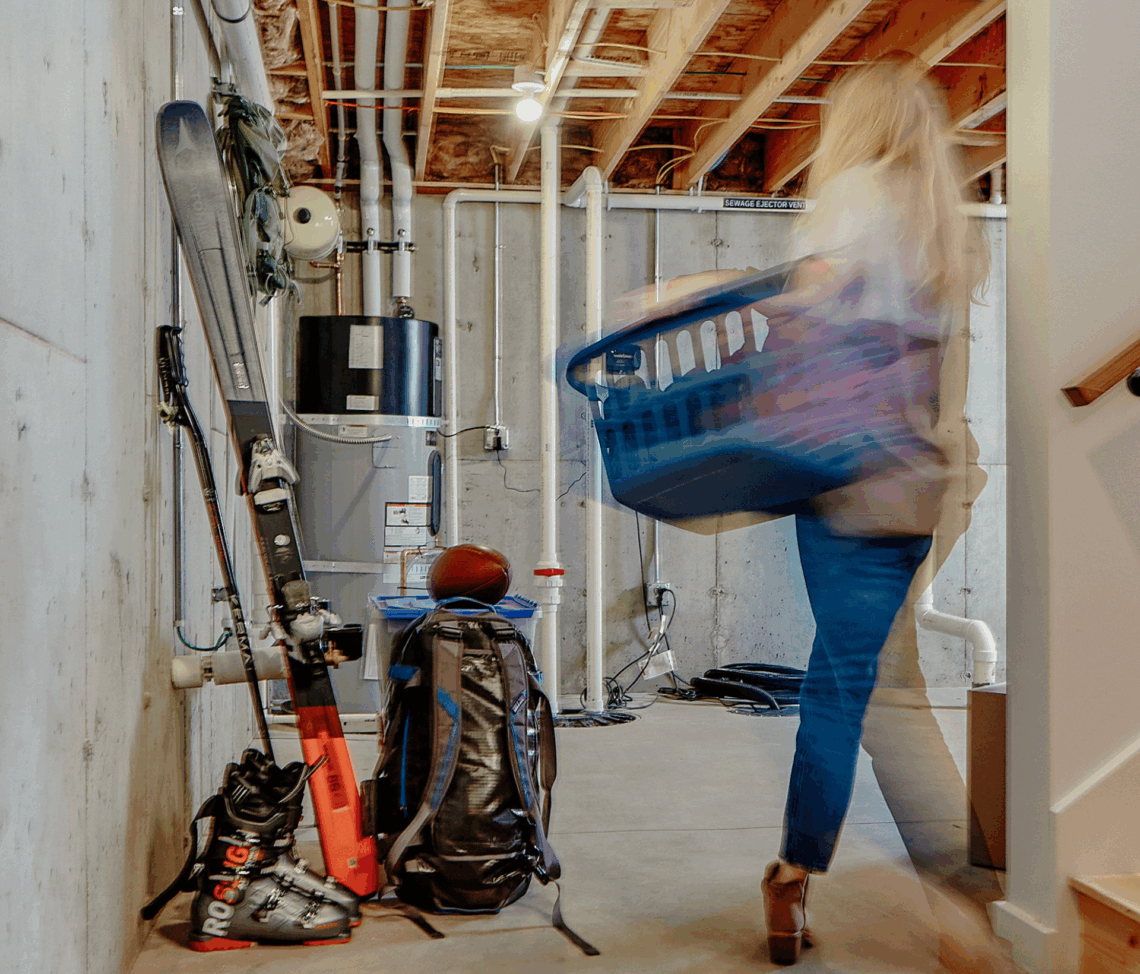

Congratulations on choosing the most efficient electric water heater on the market! Following the steps in this guide will help ensure your heat pump water heater provides you with reliable hot water while maximizing your energy savings.
1. Give It Space
Heat pump water heaters need space around them to run efficiently and allow access for maintenance. Crowding the surrounding area can reduce efficiency and hot water generation.
2. Dial in Your Setting
Make sure to check the definitions of your model’s settings, as they can differ by manufacturer.
- Heat Pump Only: This is the most efficient setting for savings, as it uses only the heat pump to generate hot water.
- Hybrid/Economy: This setting strikes a balance between efficiency and power. It prioritizes the heat pump and uses back-up heating elements only when needed. If you’re not sure what setting to use, start here.
- Electric: This setting uses the backup elements only. It is primarily used when cleaning the filter or when ambient temperatures dip below the heat pumps operating range at about 37 °F.
- High Demand Mode: This setting utilizes
both the heat pump and the electric
elements to produce as much hot water as quickly possible. - Vacation: This setting saves energy when you’re away from home by placing your heat pump water heater in a “sleep” mode until you return. Make sure to check the definitions of your model’s settings, as they can differ by manufacturer.
3. Set the Right Temperature
Both heat pump water heaters and standard electric water heaters are preset to 120 °F, a good starting temperature for the average homeowner. Check with your installer to see what temperature they’d recommend given your anticipated household usage.
Most models allow temperature adjustments between 90 °F and 140 °F. If your water heater is equipped with an external tempering valve, setting your temperature a little higher can give you more hot water at the faucet while still prioritizing the heat pump.
Scald warning! Water temperatures above 125 °F can cause severe burns or death. Children, the disabled, and the elderly are at a higher risk of being injured by scalding water.
4. The Sound of Savings
Your heat pump water heater will generate sounds similar to an electric fan. This lets you know you’re making hot water in the most efficient way.
5. Keep it Running
All water heaters require maintenance. Here’s
what you need to know to keep your heat pump water heater in good working order:
- Clean the air filter every three to six months: Set your water heater to electric mode to stop the fan. Remove the filter and rinse or wipe it clean—just as you would your dryer vent screen—then dry and slide it back into place. Remember to return the water heater to its previous operating mode.
- Confirm the condensation pump is working: Heat pump water heaters create condensation. When cleaning the filter, it is best to visually inspect the drain lines for any blockages. If your heat pump water heater has a condensate pump, inspect it for water leakage and test it periodically. Most units have a test button to assure the pump is functioning properly. If yours doesn’t have a test feature, manually filling the pump reservoir with water can activate the float switch confirming it is working correctly.
- Keep it clean: If the water heater is ducted, make sure the ends of the ducting are free of dust, debris and other blockages.
Start your savings journey today.
See how much you can save upfront on a heat pump water heater.
Connect with a qualified local professional for quotes and service.
Discover nearby retailers and explore our DIY Guide for help upgrading to a heat pump water heater on your own.
